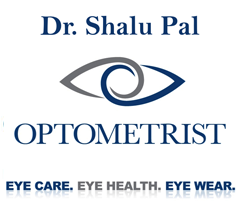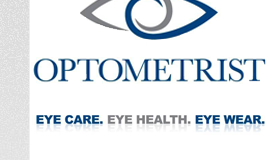Contents |
Migraine Headache
A migraine is one of the most severe headaches people can experience. Blood vessels in the brain that are expanding are thought to be the cause, which is why they are considered to be vascular in nature.
Migraines can occur at any age; they affect about one person in ten. Women suffer from them more often than men, and there may be a genetic component to them as they tend to run in families. Periods of hormonal change, often occurring during adolescence or in women around their menstruation cycles seem to trigger them to increase in frequency and intensity; however, they may lessen during pregnancy and after menopause.
TYPE OF MIGRAINE
There are several subgroups of migraine headache, identified by the symptoms and history of the person experiencing them. These include:
- Common migraine: This is the typical migraine, characterized by throbbing pain on one side of the head, usually in the temple area or behind one eye. There may be nausea, sometimes severe enough to cause vomiting. A common migraine may last anywhere from several hours up to three days. Usually, noise, movement and bright light make the pain worse.
- Classic migraine: similar to a common migraine, except that before the headache starts there may be an unusual symptom called an aura. A migraine aura can take various forms, including a vague feeling of uneasiness or anxiety, nausea, dizziness, numbness or tingling in the limbs. Some auras are visual and can be seen even with the eyes closed; most typical is a zigzag pattern or pulsating lights; a portion of the visual field may disappear for a few minutes. It is thought that auras originate from spasms of the blood vessels in the brain; the specific type of aura depends on the location of those vessels.
- Ophthalmic migraine: The affected blood vessels are the ones providing circulation to the eye. Symptoms can include a temporary loss of vision and visual aura. This type of migraine is not usually associated with a headache.
- Ophthalmoplegic migraine: A rare type of migraine that often begins in childhood, this usually consists of severe headache that can last for days with a weakness of one or more of the muscles that move the eye that can persist for weeks.
In the past, cluster headaches, sometimes called Horton’s headaches or histamine headaches were sometimes considered to be one of the migraine types; although they have some similar symptoms, however, cluster headaches are not now considered to be migraines. They are usually more severe and debilitating than migraines, and are treated differently.
Causes of Migraine
The migraine cycle begins because of a spasm in the arteries serving the brain; this tightening and narrowing of the vessels can produce an aura, but not always. After about twenty to thirty minutes, the affected vessels begin to re-dilate and stretch, creating an increase in blood flow. This is when the headache begins, although many people experience only the aura and have no headache following it.
The exact cause of the initial spasm in the cycle is not known. There is a possible link to low levels of serotonin, a brain chemical. Low levels of serotonin might be from emotional factors, stress, tension, fatigue, loud noises, glaring lights, certain drugs, alcohol, caffeine or hormones such as those found in oral contraceptives or hormone replacement therapy.
A wide variety of foods and additives are also possible triggers, including citrus fruit, chocolate, red wine, aged cheese, smoked meats and products containing nitrates, tyramine or monosodium glutamate (MSG). Cigarette smoke, strong odors, sudden cold or a drop in atmospheric pressure such as in an airplane or near an approaching storm have all been suspected as contributing factors.
Examination and Diagnosis
The symptoms of migraine are often so recognizable that a diagnosis can be made from the history alone, but some circumstances warrant a closer look and a thorough physical examination. Sometimes an exam by a neurologist is indicated, to be sure that there is no condition or disease present that may be mimicking the symptoms of migraine. Vascular disease that produces transient ischemic attacks, high blood pressure and a specific type of glaucoma are three examples.
If symptoms are not typical, if the first migraine occurs after age 40, or if auras begin with no subsequent headache, or if there is a temporary loss of vision, a vision exam including a thorough ocular health assessment should be done. This should include evaluation of the pupils to be sure reactions to light are normal, an evaluation of eye movements, retinal and optic nerve health, a test of the field of vision and tonometry, which measures the pressure inside the eyes. All of these tests are painless.
Treatment
Measures to prevent the onset of the initial vascular spasm are the best place to start. Individuals experiencing migraine may want to keep a symptom log whenever one begins, to help systematically narrow down the possible triggers and avoid them. For example, the dosages of oral contraceptives or hormones may need to be adjusted.
Once the headache begins, there are several ways to alleviate its severity by reducing the flow of blood to the head. Any of the following may help:
- Applying cold compresses to the head and neck
- Firm pressure of the palms against the temples
- Placing a hand in hot water, or taking a hot shower
- Lying down with the head higher than the rest of the body
Over-the counter pain relievers like aspirin, acetaminophen (Tylenol) or ibuprofen (Advil) may be worth a try, at least to help induce sleep which can often relieve the pain.
There are also many other treatments such as acupuncture, massage, various herbalism, ayurveda, medical marijuana, chiropractic and homeopathic medicine, among many others. Definitive results based on research for these alternative or complementary medical therapies is difficult to find; most evidence of successful treatment are anecdotal, that is, based on individual success stories. This does not imply that they are never effective or that they have no value as part of an overall treatment plan.
There are several types of medications that can be prescribed to treat migraines, either to abort an attack or lessen the severity of the pain by affecting the blood vessels. Some are taken immediately at the onset of symptoms, while others may need to be taken on a regular basis; the primary care physician is the best resource to begin. Because of their effects on the circulatory system, most prescribing them will want to carefully monitor patients taking them, particularly because there may be unacceptable side effects or complications.
Interrupt the Cycle
Migraine headaches are treatable, either with pharmaceuticals or alternative therapies, or a combination of both.
While migraines rarely indicate a serious disease or cause any permanent damage, they can significantly interfere with normal daily activities and should be evaluated for treatment. The severity of a migraine can be fairly mild or be severe enough to curtain all usual activities, but either way, people who suffer from them should know that newer medications can be very effective to stop the cycle once it begins, or prevent it entirely.






